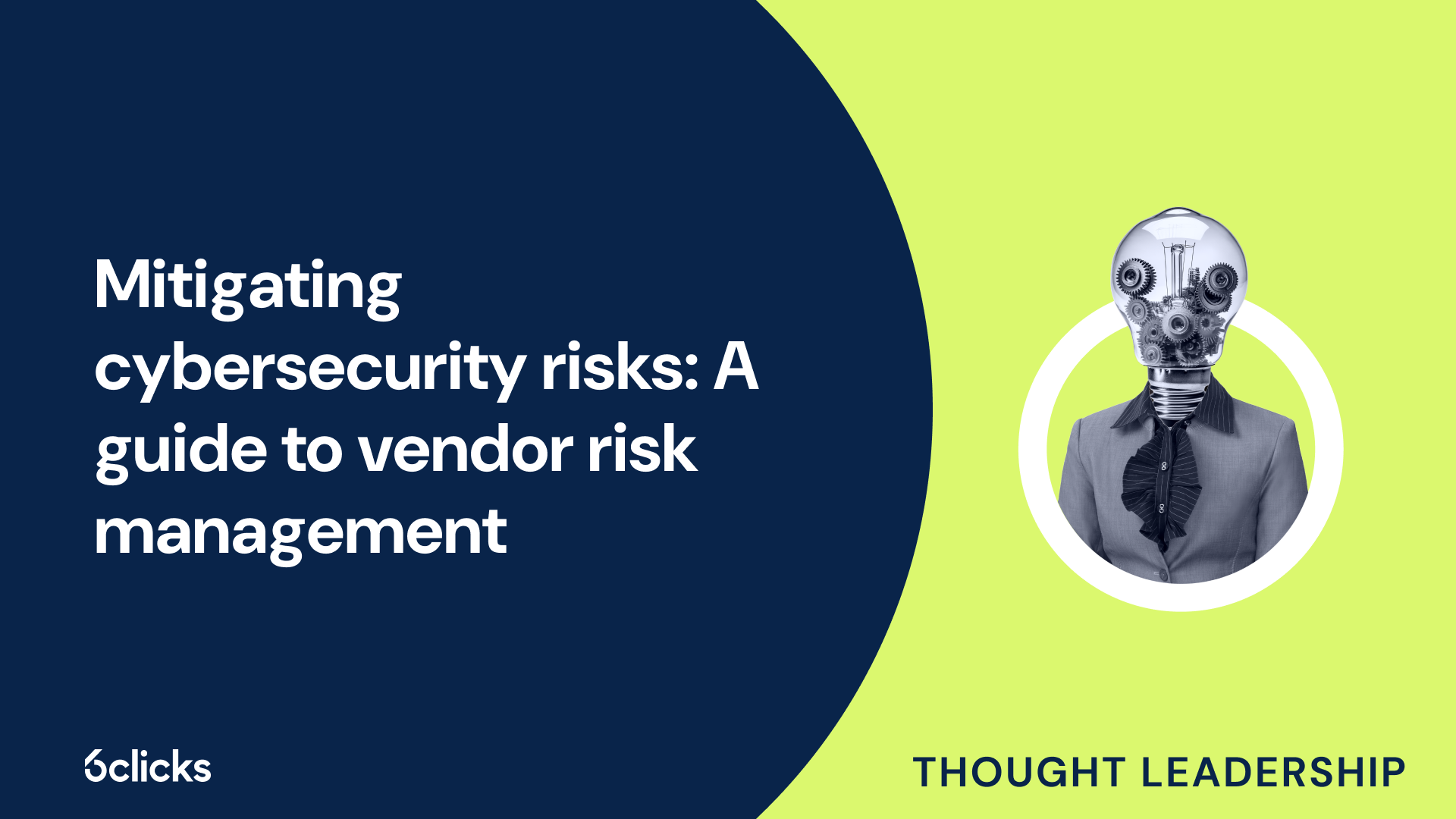How many requirements in PCI DSS?
-1.png?width=314&height=391&name=Group%20193%20(1)-1.png)
How many requirements in PCI DSS?
Definition of PCI DSS
PCI DSS, also known as Payment Card Industry Data Security Standard, is a set of security standards established by major credit card companies, including American Express, Visa, MasterCard, and JCB International. It is designed to ensure the secure processing, transmission, and storage of cardholder data to prevent data breaches and protect consumers. PCI DSS defines the requirements that organizations handling credit card transactions must meet to maintain compliance. These requirements cover a wide range of areas, including physical access controls, secure network configurations, strong access control measures, vulnerability management programs, encryption of sensitive data, regular audits and assessments, and the use of secure systems and processes. By adhering to these standards, businesses can demonstrate their commitment to protecting cardholder information and maintaining a secure payment environment. Failure to comply with PCI DSS can lead to significant financial penalties and reputational damage for businesses.
Overview of requirements
PCI DSS (Payment Card Industry Data Security Standard) compliance is essential for organizations that handle cardholder data. To achieve compliance, organizations need to address six broad categories of requirements.
- Build and Maintain a Secure Network and Systems: Organizations must establish and maintain secure networks, including protecting cardholder data while it is stored, transmitted, or processed. This involves implementing firewalls, secure configurations, and maintaining security systems to protect against unauthorized access.
- Protect Cardholder Data: Organizations should implement strong access control measures to limit access to cardholder data, such as assigning a unique ID to each user and implementing authentication mechanisms. Additionally, sensitive authentication data should never be stored after authorization, and stored cardholder data must be encrypted.
- Establish a Vulnerability Management Program: Organizations need to regularly identify and evaluate vulnerabilities, including implementing and maintaining secure systems and applications. This entails using antivirus software, regularly updating systems, and developing and maintaining secure coding practices.
- Implement Strong Access Control Measures: Organizations must restrict access to cardholder data on a need-to-know basis by assigning unique IDs and implementing physical access restrictions. Access to network resources should also be restricted, and security policies must be maintained to ensure that access is regularly reviewed.
- Regularly Monitor and Test Networks: Organizations must track and monitor all access to network resources to identify and respond to any suspicious activities. This includes the implementation of audit trails, regular security testing, and penetration testing to ensure the security of systems.
- Maintain an Information Security Policy: Organizations should establish and maintain a comprehensive security policy that addresses system security measures and protects cardholder data. This policy should be communicated to all relevant personnel and regularly updated as necessary.
By addressing these six categories of requirements, organizations can achieve PCI DSS compliance and maintain the security of their cardholder data environment.
Requirement 1: build and maintain a secure network
Requirement 1 of PCI DSS focuses on building and maintaining a secure network. This involves establishing and maintaining secure networks to protect cardholder data at all stages, including storage, transmission, and processing. To comply with this requirement, organizations need to implement firewalls, secure configurations, and security systems to prevent unauthorized access. By taking these measures, organizations can ensure the integrity and confidentiality of cardholder data, safeguarding against potential data breaches and providing a secure environment for card transactions.
Firewalls
Firewalls play a crucial role in maintaining a secure network and protecting cardholder data. Acting as the first line of defense against hackers, firewalls are designed to restrict incoming and outgoing network traffic. By implementing access control policies, firewalls ensure that only authorized users have access to sensitive information, such as credit card data.
Firewalls can effectively filter network traffic, allowing organizations to control what types of data can enter or leave their network. This ability to restrict network traffic is essential in preventing unauthorized access to cardholder data and stopping malware from infiltrating the system.
Properly configuring and maintaining network firewalls is essential for their effectiveness. Establishing firewall rules and standards ensures that only necessary network traffic is allowed, minimizing the risk of malicious activities. Regular updates and patching of firewall software are also critical to address any vulnerabilities and maintain a robust security posture.
Secure configurations
Secure configurations play a crucial role in achieving PCI DSS compliance. In a PCI DSS environment, it is imperative to ensure that all devices, including routers and point of sale (POS) equipment, are properly configured to minimize security risks and protect cardholder data.
One common mistake that organizations make is leaving devices with default passwords. Attackers are well aware of default passwords and can exploit this vulnerability to gain unauthorized access to systems and compromise sensitive data. To counter this, it is important to change default passwords immediately upon installation and use strong, unique passwords for each device.
To ensure secure configurations, organizations should start by creating an inventory of all devices that directly or indirectly affect the cardholder environment. This includes routers, switches, firewalls, and any other network infrastructure devices. Once the inventory is established, organizations can identify potential vulnerabilities and take appropriate steps to secure these devices.
Implementing secure passwords is another critical step in achieving secure configurations. Organizations should enforce policies that require the use of strong passwords and regular password changes. Additionally, it is essential to adjust appropriate security settings to meet the PCI DSS compliance requirements. This may include disabling unnecessary services, enabling encryption, and implementing access control measures.
Default passwords
Default passwords pose a significant security risk and are a common vulnerability that can lead to unauthorized access and the compromise of sensitive data. In compliance with PCI DSS Requirement 2, it is crucial to change default passwords immediately upon installation.
Several common devices and software often have default passwords that need to be changed. These include routers, point-of-sale (POS) terminals, operating systems, security software, SNMP (Simple Network Management Protocol) community strings, and WEP (Wired Equivalent Privacy) keys. Attackers are aware of these default passwords and can easily exploit them if organizations fail to change them.
Changing default passwords for operating systems and security software is essential to enhance the security of systems. For example, default passwords for POS terminals can be easily found online, making them an attractive target for attackers. Similarly, SNMP community strings and WEP keys are often left as default, providing easy access to network resources. By changing these default passwords, organizations can significantly reduce the risk of unauthorized access.
To achieve compliance with PCI DSS Requirement 2 and ensure the security of systems and cardholder data, organizations must prioritize the immediate change of default passwords for all devices and software within their cardholder environment. Regularly updating and using strong, unique passwords is a fundamental security measure that should not be overlooked.
Malicious software protection
One crucial aspect of PCI DSS compliance is the protection against malicious software. To ensure the security of cardholder data, organizations must implement robust antivirus and anti-malware software. These software solutions play a vital role in constantly scanning all systems, promptly detecting and defending against known threats.
Regular and timely updates are essential to ensure that these software solutions are equipped to tackle the ever-evolving landscape of malicious software. Updates include the latest virus definitions and patches that address any vulnerabilities identified by the software vendors. By keeping antivirus and anti-malware software up to date, organizations can proactively protect their systems from new and emerging threats.
In addition to antivirus and anti-malware software, organizations must also establish a process to identify and classify security vulnerabilities within their card data environment. This involves regular vulnerability assessments and penetration testing to identify any weaknesses in the system. Once identified, these security vulnerabilities should be assigned risk rankings to prioritize their remediation.
Prompt deployment of critical patches is another critical aspect of protecting against malicious software. By ensuring that all systems within the card data environment are updated with the latest patches, organizations can effectively close security gaps and address vulnerabilities that can be exploited by attackers.
Requirement 2: protect cardholder data
Requirement 2 of the PCI DSS aims to protect cardholder data. To achieve this, organizations must implement strong access control measures and secure systems. This includes restricting access to cardholder data, ensuring that it is stored securely, and protecting it during transmission. To comply with this requirement, organizations must maintain a secure network by encrypting sensitive authentication data and implementing secure configurations for all system components. They must also adhere to strict security policies and procedures, such as using strong cryptography to protect cardholder data and regularly monitoring and testing the security systems. By following these compliance requirements, organizations can minimize the risk of unauthorized access to cardholder data and ensure the security of card transactions.
Access to cardholder data
Access to cardholder data is a critical aspect of ensuring the security of payment card transactions. The Payment Card Industry Data Security Standard (PCI DSS) aims to protect cardholder data and sets forth specific requirements and best practices to limit access to sensitive information.
To ensure the security of cardholder data, it is essential to implement strong access control measures. This includes restricting physical access to system components that store or transmit cardholder data. Physical security measures, such as surveillance cameras, visitor logs, and access control systems, can help prevent unauthorized individuals from gaining access to cardholder data storage areas or systems.
Implementing security measures for restricted access to cardholder data is vital. Visitor logs accurately record everyone who accesses the cardholder data storage areas, allowing for accountability and traceability. Utilizing video surveillance can provide real-time monitoring and evidence collection in case of security incidents.
Additionally, organizations should consider implementing a proper system for the disposal of cardholder data, such as the shredding of physical documents. This measure ensures that the data cannot be recovered or accessed by unauthorized individuals.
By following these best practices and complying with PCI DSS requirements, organizations can ensure that access to cardholder data is tightly controlled, reducing the risk of data breaches and protecting the trust of customers and payment card providers.
Encryption of cardholder data across public networks
Encrypting cardholder data when it is transmitted across public networks is of utmost importance in maintaining the security of sensitive information. Without encryption, cardholder data can be intercepted and accessed by unauthorized individuals, exposing cardholders and organizations to significant risks.
Transmitting unencrypted data leaves it vulnerable to eavesdropping and interception by malicious actors. This is especially concerning when it comes to public networks, as they are inherently less secure than private networks. Public networks, such as Wi-Fi networks in coffee shops or airports, lack the robust security measures found in secure networks owned and managed by organizations.
To address these risks, organizations should utilize secure protocols, such as Transport Layer Security (TLS) or Secure Shell (SSH), to encrypt cardholder data during transmission across public networks. Encryption effectively renders the data unreadable to anyone who does not possess the key to decrypt it, thereby protecting it from prying eyes.
Implementing strong cryptography and security protocols ensures the confidentiality and integrity of cardholder data, minimizing the risk of unauthorized access and tampering. By encrypting cardholder data during transmission across public networks, organizations demonstrate compliance with PCI DSS and prioritize the security of sensitive information.
Sensitive authentication data
Sensitive authentication data plays a pivotal role in the security of cardholder data environments and is crucial to protect in the context of PCI DSS compliance. This data includes information such as full track data from the magnetic stripe on the back of a payment card, PIN numbers, and the three- or four-digit service codes. Unauthorized access to this sensitive data can lead to potential fraud and compromise the security of card transactions.
To securely handle and store sensitive authentication data, organizations must adhere to strict measures as outlined in the PCI DSS requirements. Firstly, limiting the amount of data collected and stored to only what is necessary reduces the risk exposure. Secondly, the retention time for this data should be minimized, ensuring that it is not stored for longer than is required for legitimate business needs.
Furthermore, encrypting sensitive authentication data using industry-accepted algorithms and secure cryptographic keys is essential. Encryption renders the data unreadable to unauthorized individuals, providing an additional layer of protection. Adequate access controls should also be implemented to restrict access to cryptographic keys, ensuring that only authorized personnel can decrypt the data when necessary.
By implementing these necessary measures, organizations can effectively protect sensitive authentication data and mitigate the potential risks associated with unauthorized access or data breaches. Compliance with these requirements is crucial not only to meet the PCI DSS standards but also to maintain the security and trust of cardholder data within the payment card industry.
Transmission of cardholder data over secure channels
The transmission of cardholder data over open and public networks is a critical stage where data can be vulnerable to unauthorized access and interception. To ensure its security, it is essential to encrypt cardholder data during transmission.
Encrypting cardholder data scrambles it into an unreadable format, making it useless to anyone who intercepts it without the decryption key. This provides a crucial layer of protection against malicious individuals who may attempt to gain unauthorized access to this sensitive information.
Recommended encryption protocols for transmitting cardholder data include Transport Layer Security (TLS) and Secure Shell (SSH). TLS is widely used for securing communications over networks and is the standard protocol for secure web browsing. SSH, on the other hand, is commonly used for secure remote access to systems and file transfers.
For wireless networks, it is important to follow industry standards such as IEEE 802.11i, which provides guidelines for securing wireless communication. Implementing strong encryption protocols and adhering to industry standards helps to safeguard cardholder data during transmission over public networks, minimizing the risk of unauthorized access.
Requirement 3: maintain a vulnerability management program
Requirement 3 of the Payment Card Industry Data Security Standard (PCI DSS) focuses on the need to maintain a vulnerability management program. This program is essential for identifying, prioritizing, and mitigating potential vulnerabilities that could be exploited by attackers. By regularly scanning for vulnerabilities and promptly addressing any identified weaknesses, businesses can significantly reduce the risk of unauthorized access to cardholder data. The vulnerability management program entails conducting regular scans on all systems and networks, as well as promptly applying security patches and updates. Additionally, organizations must also monitor and analyze vulnerability intelligence sources to stay informed about emerging threats and trends. A robust vulnerability management program helps to ensure the ongoing security of cardholder data environments and is vital for maintaining compliance with PCI DSS requirements.
Use and regularly update antivirus software
The use of antivirus software plays a crucial role in maintaining PCI DSS compliance and ensuring the security of cardholder data. By regularly updating antivirus software, organizations can better protect their systems from malicious software and potential breaches.
Antivirus software should be deployed on all computing systems within the cardholder data environment, including point-of-sale (POS) equipment. This encompasses devices such as computers, servers, routers, and any other system that processes or stores cardholder data. Regular updates to antivirus software are necessary to keep up with emerging threats and the evolving tactics of cybercriminals.
Furthermore, antivirus software should be actively running on these systems at all times to continuously monitor for and detect any potential threats. This ensures that any malicious software attempting to gain unauthorized access to cardholder data can be identified and thwarted promptly.
In addition to actively protecting systems, antivirus software should generate logs that can be audited if necessary. These auditable logs serve as evidence to demonstrate compliance with PCI DSS requirements and can provide valuable insights into any suspicious activities that may have occurred within the cardholder data environment.
Requirement 4: implement strong access control measures
Requirement 4 of the Payment Card Industry Data Security Standard (PCI DSS) focuses on the implementation of strong access control measures to protect cardholder data. Access control is a fundamental security principle that ensures only authorized individuals have access to sensitive information.
One key principle of access control is the principle of least privilege. This principle dictates that users should only have the minimum level of access necessary to perform their job responsibilities. By limiting access to cardholder data to only those who need it, the risk of unauthorized access or misuse is minimized.
Another principle is the need-to-know principle which states that individuals should only have access to the specific information required to perform their tasks. Implementing this principle helps to further restrict access and reduce the potential for unauthorized disclosure or manipulation of cardholder data.
Under Requirement 4, specific requirements include:
- Restricting access to system components and cardholder data to only those who have a legitimate business need.
- Implementing strong authentication measures such as two-factor authentication to verify the identity of users.
- Assigning unique credentials to individuals to ensure accountability and traceability.
- Restricting physical access to cardholder data by employing secure measures such as access controls, surveillance systems, and visitor logs.
- Regularly reviewing access privileges to ensure they are up-to-date and aligned with business needs.
Implementing strong access control measures is crucial in safeguarding cardholder data and reducing the risk of unauthorized access or misuse. By adopting these measures, organizations can demonstrate compliance with PCI DSS and enhance the security of their payment card transactions.







